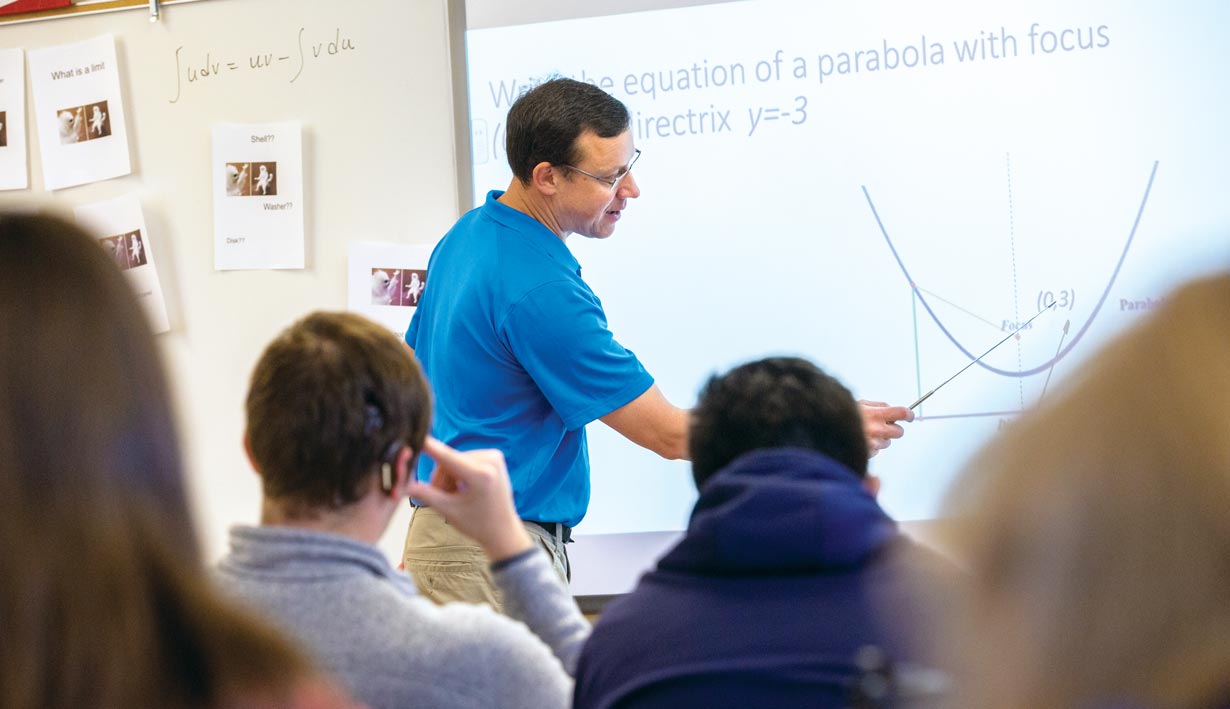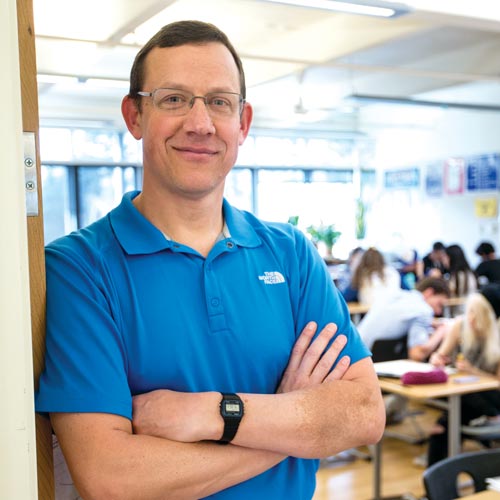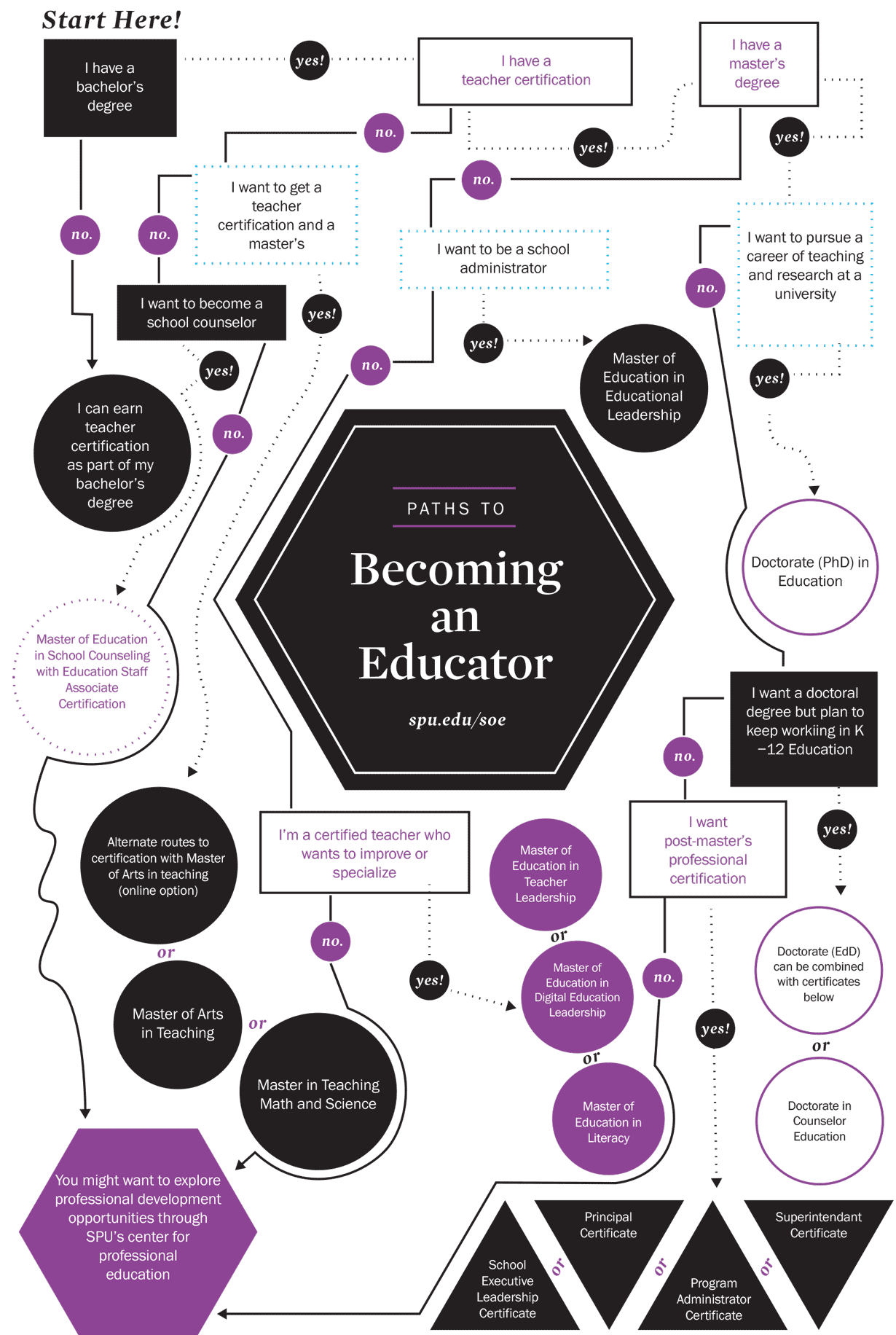Education Teaching and Learning
Ahead of the Curve
There’s a teacher shortage in the state of Washington, and grads of SPU’s programs are helping fill in the gap
By Tori Hoffman | Photos by Mike Siegel
 Burton Shields student teaches in a math classroom at Bainbridge High School.
Burton Shields student teaches in a math classroom at Bainbridge High School.
 Burton Shields
Burton Shields
Burton Shields comes from a family of teachers. Perhaps then, it’s not so surprising that he decided to embark on a career switch at age 49. After finishing his time in the U.S. Army and moving to Seattle, Shields felt his training and mentorship skills while working with young people in the military could transfer over to a teaching career. What attracted him to Seattle Pacific University’s Alternative Routes to Certification program as his path to become a teacher were the friendly staff, the convenient location, and the emphasis on mathematics and science.
Preparing to earn his certification in mathematics this June, Shields is already student teaching at Bainbridge Island High School as a part of the program.
“I’m really focused on just being a good math teacher,” Shields says. “I think I bring a lot of good world experience to the teaching area, and I like to think I’m pretty good at math, so between the two of those, I’m really looking forward to teaching and mentoring kids.”
The Alternative Routes to Certification program in Seattle Pacific’s School of Education is designed to help train qualified teachers efficiently, since it integrates teacher certification with a Master of Arts in Teaching degree in a full-time, one-year program.
Given the shortage of fully qualified teachers in Washington State, experienced professionals like Shields will be in high demand, even if they are fairly new to teaching. This year, colleges and universities in Washington state provided about 3,000 qualified teachers, while the predicted need is about twice that amount.
Three major contributing factors to the shortage include a shortage in substitute teachers; an increasing need in specific subject areas, especially math, science, and special education; and an overall lack of funding.
“It’s kind of like this perfect storm,” says Associate Professor of Educational Administration and Supervision Bill Prenevost. “You decrease class sizes so you need more teachers, you have restrictions on those teachers that retire so that they cannot substitute, and then you start having more teachers that are choosing to retire, so you have this big gap in what you need.”
Though his role at SPU focuses on principal and superintendent preparation, Prenevost has seen that the teacher shortage affects all educators, going all the way up to the district administration.
As the director of educator pathways at the State of Washington Professional Educator Standards Board, Alexandra Manuel works very closely with school districts, higher education institutions, and educator preparation programs. This past year, her department redesigned their approach to alternate route programs after hearing from preparation programs and districts throughout the state. The goal, she says, is to foster partnership in support for true success.
“We believe alternate route programs and block grants are a solution that allow for growing future educators within the community,” Manuel says. “It is really exciting because it fosters a level of partnership that we have always hoped for but not always seen.”
School districts have long sought out SPU-educated teachers for their competence and character, says Assistant Professor of Education and Graduate Teacher Education Chair David Denton. And this program aims to prepare soon-to-be certified teachers to navigate a hiring process he describes as increasingly aggressive. To get in front of their need, districts take part in pool hiring, where they invite prospective hires to get together for a meet-and-greet-style networking event before teacher candidates even have their certification.
The outcome lands almost all candidates with contingent employment, ensuring a job in the fall but not a specific location. Districts are then able to secure their employees early.
Meanwhile, Shields is discovering that the ARC program’s focus on student-centered learning benefits both his career and the students with whom he’s spending his days.
“It’s not just a teacher up there lecturing, it’s students discovering new knowledge for themselves,” he says, “and I think it’s fun to try to come up with ideas that will lead to that type of exploratory learning.”
Learn more about teacher education programs in SPU’s School of Education.
Paths to becoming an educator
Seattle Pacific University’s School of Education has programs for educators at every stage of their careers. Are you an educator or future educator looking to take your next step? Expand flowchart.

